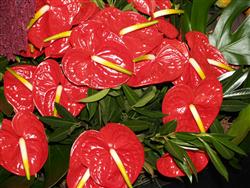 Work in the Interior Plantscaping Industry
Work in the Interior Plantscaping Industry
Start an Indoor Plant Nursery
Work in a Garden Centre
This is a course equally applicable to the professional interior plantscaper or the home owner (or interior decorator) who aspires to achieve the very best results with their indoor plants. You will learn about the main family groups indoor plants fall into, the cultural requirements and general characteristics of each of those groups, and from there develop the ability to select the right plant for the right situation. Many types of growing methods are covered (in pots, baskets, hydroponics, terrariums, greenhouses), as well as soil mixes, propagation, pest control, feeding and lots more.